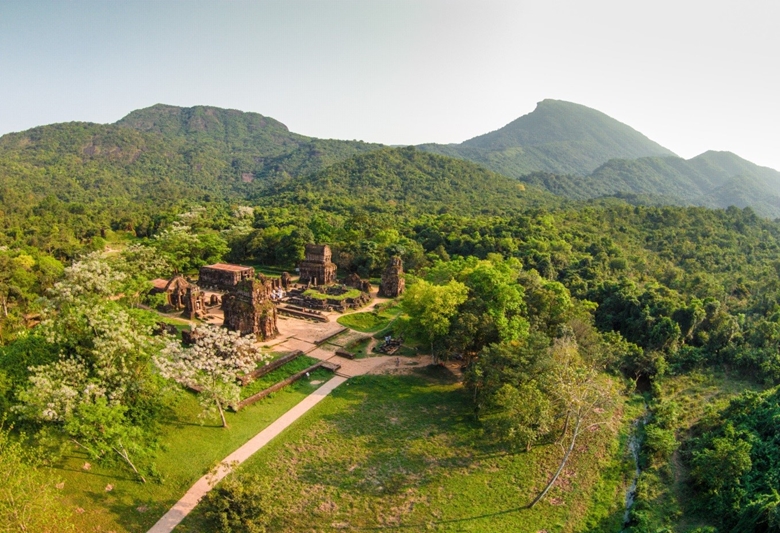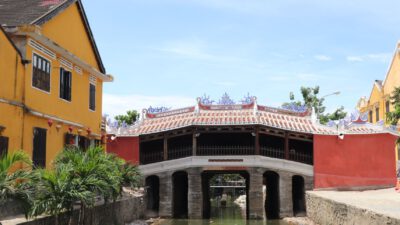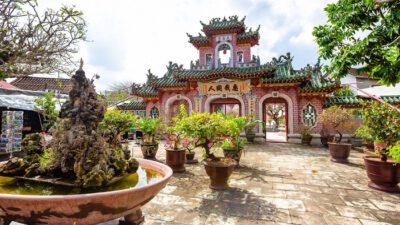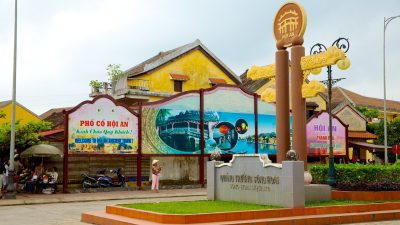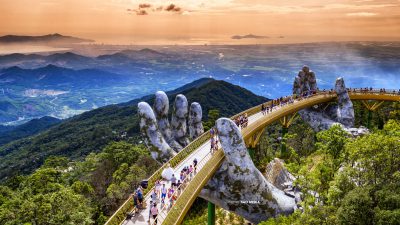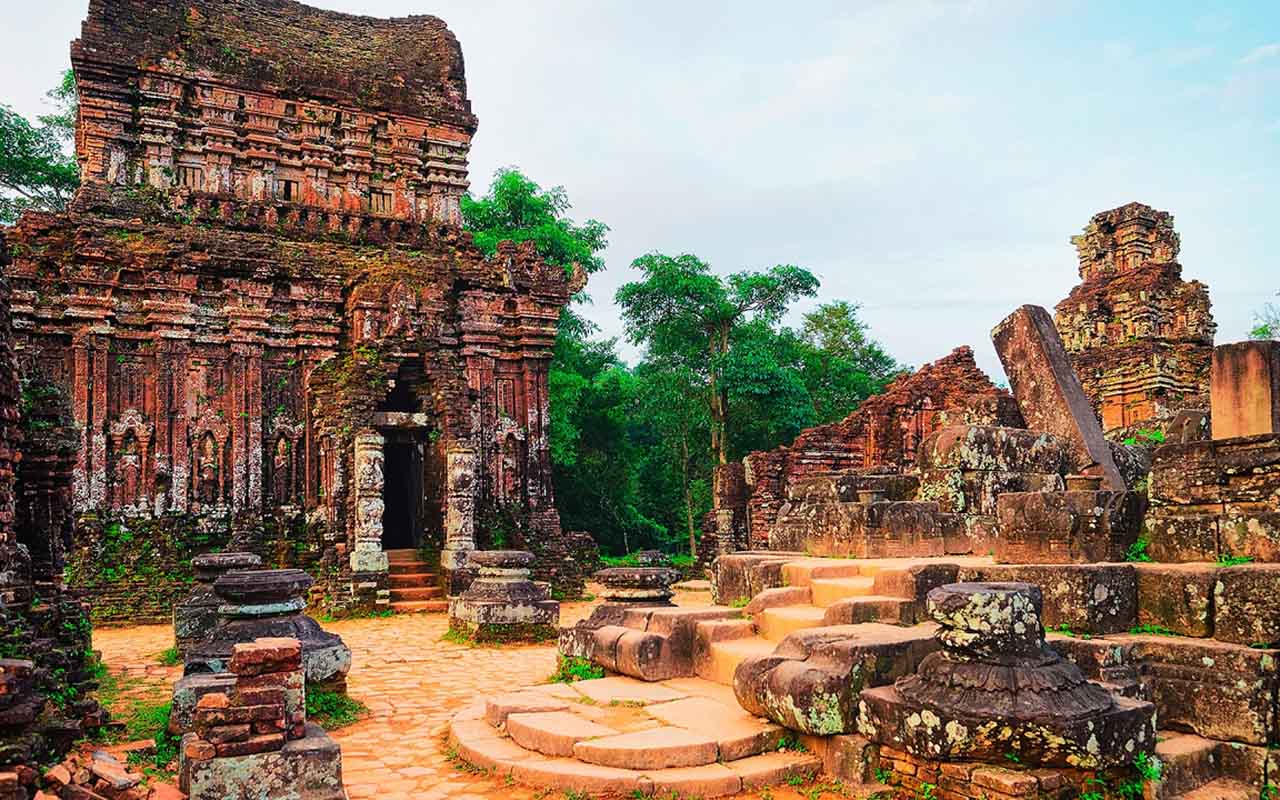
My Son Sanctuary is located in Duy Phu Commune, Duy Xuyen District, Quang Nam Province, approximately 69 km from Da Nang City. It is close to the Tra Kieu ancient citadel, which contains several Champa temples. The sanctuary is set in a lush green valley with a 2 km diameter, surrounded by mountains. This site was once a place of worship during the Champa Kingdom. My Son Sanctuary is regarded as one of the most significant Hindu temple complexes in Southeast Asia and is the only heritage of its kind in Vietnam.
My Son Sanctuary was discovered in 1885 by a group of French soldiers. The Holy Land with more than 70 tower-temple architectural structures of Cham Pa civilization retaining historical, cultural, architectural and artistic values from 9 centuries’ time (from 4th – 18th century), is regarded as monumental as other renowned relics in the region of South East Asia such as Angkor, Pagan, Borobudur.In 1999, it was recognized as a World Heritage Site by UNESCO.
My Son was possibly built in the 4th century. Over the following centuries, many large and small temples were added and constructed. It became the center of Champa culture in Vietnam. In addition to serving as a site for ceremonies and helping the kings connect with the divine, My Son also functioned as a focal point for Champa culture and religious beliefs, and was the burial place for kings and powerful monks
Visitors to My Son Sanctuary are often amazed by the unique architectural art of the site. The temples and towers are all built in the Indian style, featuring a main temple surrounded by smaller towers and auxiliary buildings, such as guesthouses, storage areas for offerings, or water tanks used for baptismal rites. The Cham towers are not very spacious. Typically, the interior houses a set of Linga, symbolizing the god Shiva, which occupies most of the space, with just enough room for worshippers to line up and walk around. The temples were constructed in a very enclosed manner, without windows, making the interior dimly lit. As a result, there are small triangular openings in the walls where lamps are placed. The temples are always oriented toward the east, the direction of the rising sun and the abode of the gods.
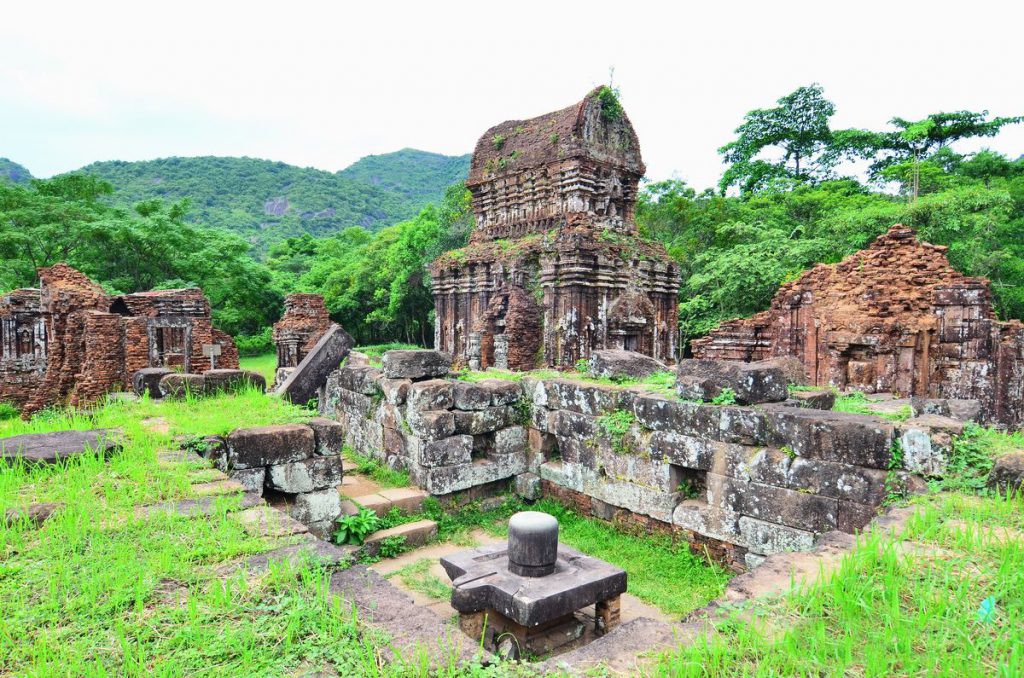
The most distinctive feature of Cham towers is the material used in their construction. The towers are built with fired bricks, combined with stone decorative elements. The bricklaying technique of the Cham people is so intricate and exceptional that even today, experts have not concluded why these brick-built towers, without the use of mortar, have stood firm for thousands of years, enduring the elements of wind, rain, and dust. Time has only worn them down gradually; it has not been able to separate the bricks from one another. Moss and lichen are common characteristics of ancient structures, but in the case of the Cham towers, the bright yellow of the fired bricks still shines, despite enduring centuries of weathering. If it weren’t for the worn marks left by wind and sand on the brick walls and the mistletoe growing on the decorative patterns, one might think the towers were newly constructed. Perhaps that is why ancient Chinese texts praised the Cham people as ‘Masters of the art of brick construction.
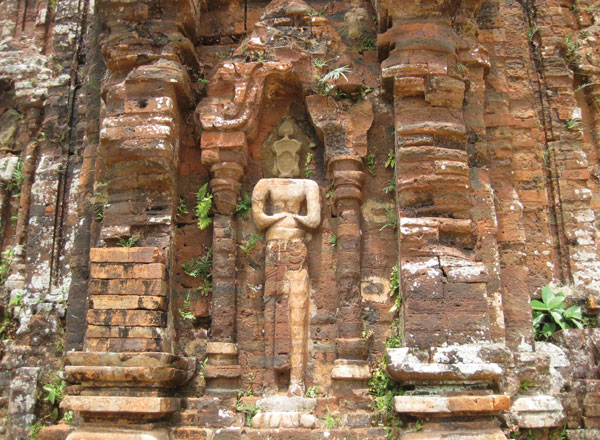
In terms of sculpture, My Son features a style of creation that is both delicate and graceful, yet still maintains a vibrant and harmonious vitality. It seems that the peace and prosperity of the Champa Kingdom shaped the mindset of the Cham artists, who infused life into the statues, making them come alive with a charm that is full of creativity and mystery.
Standing before My Son, we feel as if we are reconnecting with the Cham artists and their exceptional craftsmanship, with every line of architecture and every decorative pattern revealing their brilliant and creative labor. The more proud we are of My Son, the more we must strive to preserve and enhance the value of this heritage.
